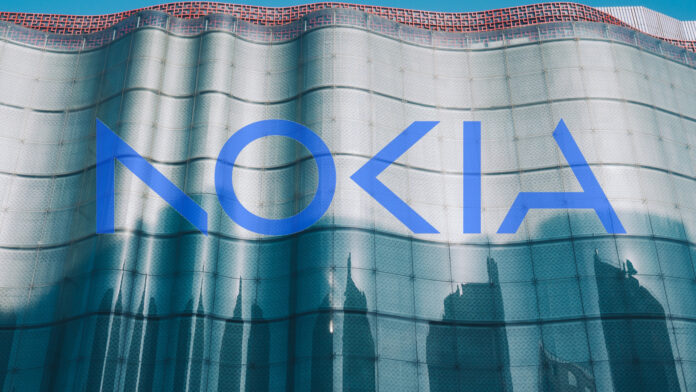A couple of years back, Nokia talked up its private 5G cloud system like a Netflix-style content platform; almost three years later, it is looking to deliver on that concept by loading its MXIE edge-compute servers with Industry 4.0 applications. It is a telling shift for the vendor, which shows – maybe; it would like you to believe – the primacy of its expansive industrial-grade private cellular play, and its lead in the market. That’s the story, anyway.
“Generally, competitors are still figuring out their solutions; they’re still trying to work out the magic – just to come up to our level. And we’ve moved beyond, already. Private wireless is the table stakes, and DAC is the benchmark, and now we’ve moved to MXIE, and on to apps and devices,” says Stephane Daeuble, in charge of enterprise solutions marketing at Nokia, responding to a prompt about late IT/OT-geared cellular entries by HPE and Siemens, notably.
Indeed, the most interesting aspect for market watchers is how Nokia is straddling this IT/OT divide in the Industry 4.0 discipline, and whether either side really has the upper hand in the selection and delivery of new digital systems, including those running novel private 5G networks. Speaking ahead of Hannover Messe last month, the Finnish vendor revealed a quartet of new third-party Industry 4.0 applications have been embedded in its MXIE system.
The MXIE offer proposes a single mission-critical industrial edge (MXIE) box for Industry 4.0 networking and applications; in ways, it has superseded the company’s Digital Automation Cloud (DAC) product, which Nokia presented in late 2020 as the original home for its Netflix-style industrial content. The DAC system now resides on the MXIE platform, alongside a stack of compute power and a bunch of software apps, and is mostly sold with it.

Nokia has 25 applications on MXIE, so far, and is looking to add more; it is championing an “ecosystem neutral” library of Industry 4.0 apps, to give enterprises choice. The new ones include: Litmus Edge, a digital-twin package with its own app catalogue; Crosser, a low-code IoT analytics engine; Atos Computer Vision, a production-line machine vision solution; plus a firewall from Palo Alto Networks to segregate data from tiered OT systems.
The first and last of these were embedded at the request of US system integrator Kyndryl, a key go-to-market partner for Nokia. Kyndryl claims to serve three quarters of Fortune 100 companies; it has 100-odd “engagements” with Nokia in 24 countries, including with Dow Chemical, a flagship public reference for the pair. “These are solutions its customers are asking for,” says Daeuble. Which is interesting, in itself, and says something of how they are working together.
But the announcement – about a telco company running an OT platform for independent software (ISV; IT) vendors – if we can simplify like that – is more profound, arguably. Daeuble says: “MXIE is the natural place, because it is industry appropriate and ecosystem neutral – OT-grade, any-cloud, any-ISV. Most Industry 4.0 data will flow through the private network, and MXIE is where the private network lives.” He also responds directly to the Netflix reminder.
“Yes, and that was the vision – which is why it is called a ‘digital automation cloud’. But the reality is it started with private wireless for voice and team comms, which were there from the start; that has changed now. MXIE is not a network box that runs voice services as well; it is an application platform that runs a core network, plus Wi-Fi, and all these other things. And it has changed because the data on the network has more value than just the network.”
These are not comments you hear every day from the telco crowd, even if there is growing (audible) acceptance among its industry-facing elements that 5G is just a tool in the IoT box, piece of the Industry 4.0 puzzle – another brick in this wall of change, which has to be constructed and scaled. Nokia sounds almost excitable. “There is a big backlog of automation companies coming to us, saying, ‘Can you onboard this? Because we don’t have the skills.’”
Daeuble says Nokia is building a new MXIE segment of “robotics and mechatronics” applications, for enterprises to manage fleets of automated guided vehicles (AGVs) and autonomous mobile robots (AMRs) – given new life, the story goes, when attached to reliable edge-cellular systems. It is doing the same with worker safety and worker augmentation (AR) apps, he adds. “As we get narrower with vertical segments, we will find more specific apps.”
A bunch of Nokia’s own industrial IoT solutions already reside in the MXIE shop; so do big-ticket Industry 4.0 items from the likes of Siemens (MindSphere) and PTC (ThingWorx). Expect more from Rockwell Automation, Schneider Electric, and Siemens again, he says. “We have some big names; PTC and Siemens are absolute bulldozers in that industrial connectivity space for digital twins, so we are already hitting 70 or 80 percent of the market in Europe.”
He goes on: “We are trying to take the big hitters first. But we also need to be pragmatic. MXIE is ecosystem-neutral, but it is also OT-grade – which means ultra reliability and fast failover-recovery. Which is why the onboarding takes time. These guarantees do not come as standard with a regular server box, which is just a piece of hardware, and that’s it. MXIE is fully managed and fully orchestrated – and extremely reliable.”
Microsoft’s Azure edge functions are in the MXIE box, too; Nokia has “collaboration” with Alibaba Cloud, says Daeuble, and pre-productised “engagements” with AWS and Google Cloud. All of which hints at a bunch of IT/OT subplots – different sides, characters, relationships – which Nokia is not about to get into in serious detail, and certainly not by name. But it is happy enough to delineate its own strategy, which brings some of those other twists into relief anyway.
Tellingly, Nokia acknowledges it makes “several-times” more from multi-featured managed MXIE contracts than from solo-deals on its DAC system. But private cellular – in the form of either its IT/OT-friendly DAC offer or its telco-born Mobile Private Wireless (MPW) macro-product – swings the deal, says Nokia. About 30 percent of MXIE customers are currently using the platform for apps as well; only “a few”, but a few nonetheless, are taking it just for the apps.
Daeuble comments: “Our DNA is clearly the private wireless and the connectivity; that’s the main draw. But we make several-times from the whole solution, compared with just the network. But the network is the first-piece, and essential part of the whole solution – and it gives you the edge blade, anyway. It is the first thing that goes into customers – and it is managed and OT grade, and the perfect place to build your Industry 4.0 operation.”
He adds: “All the machine data goes via the core network inside that box, so it is the ideal place to process the data. It is a soft-sell because you get it anyway. ‘You want a Palo Alto firewall? You have two choices: buy another piece of hardware, or just put it in here’ – so it’s the same company that runs the private network, the industrial LAN, and the IT as well. That’s the way it works with Kyndryl, for example. It is all managed in MXIE, with the DAC network.”
It is cheaper, he explains, and also simpler – “not just for the customer, but also for the system integrator, which can go beyond just connectivity as well, and also for the software vendor”. This last aspect is interesting; that ISVs – sometimes, actually, attached to major industrial firms, but increasingly-often specialist niche outfits under their own steam – are unburdened of the requirement to support their IoT applications directly with hardware.
The MXIE gambit is that the hardware is already there, because of the network, and it is being offered as a managed “OT-grade” service. Daeuble says: “They are software companies, after all; which doesn’t mean they can forget about hardware, but a lot don’t necessarily have that IT scale. They will often just instruct the customer to buy a Dell box, or an HPE box. But that’s another box – and it is not managed or orchestrated, or connected to the cloud.”
This article continues in another post, under the header: OT-grade, IT-friendly, telco-made – Nokia eyes Industry 4.0 ‘sweet spot’. Click here to read the next instalment.

